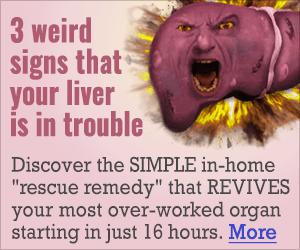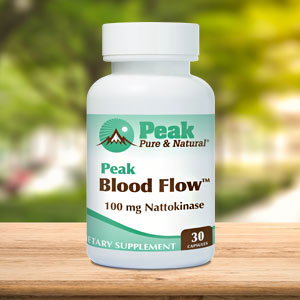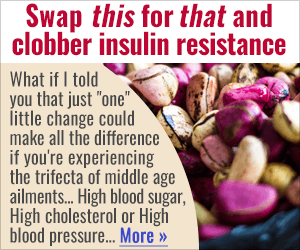Get Easy Health Digest™ in your inbox and don’t miss a thing when you subscribe today. Plus, get the free bonus report, Mother Nature’s Tips, Tricks and Remedies for Cholesterol, Blood Pressure & Blood Sugar as my way of saying welcome to the community!
9 signs of poor circulation you shouldn’t ignore

Good circulation is one of the most critical factors for a healthy body.
Your heart, brain, liver, kidneys, and everything in between receive life-giving oxygen via a complex network of blood vessels throughout the body.
But that’s not all…
Healthy circulation is essential for cleansing the body of toxins, as blood is filtered through the liver and kidneys. And nutrients broken down by the stomach, liver, pancreas and small intestines are absorbed into the bloodstream to be circulated to all the cells and tissues of the body.
According to Dr. Anahita Duha, a Mass General Brigham vascular surgeon, “Your entire health is intimately related to circulation. Disruption of circulation — whether it’s a problem with the heart unable to push blood, or within the blood vessel that doesn’t allow blood to move — all has a serious impact.”
But circulation problems can creep up on you. To stay ahead of potential problems, it’s essential to recognize the early signs of poor circulation and know what to do about them.
#1 – Varicose veins
Those purple/blue-colored, swollen, twisted lines or bulges visible just under the skin, commonly on the legs and ankles, are a big red flag. Called varicose veins, they are caused by valves in the veins not functioning correctly, allowing blood to pool and the veins to enlarge.
Other symptoms that often accompany varicose veins include dry, tight, irritated, or itchy skin, as well as aching, swelling, heaviness, or pain in the legs. These symptoms, along with the varicose veins themselves, can worsen with prolonged periods of sitting or standing.
Unfortunately, varicose veins can also signal blood clot trouble. Fortunately, there are six ways to address the serious side of varicose veins and reduce the risk of blood clots.
#2 – Muscle cramps
Leg cramps that worsen when you walk or during physical activity may be a sign of claudication. Claudication can be a sign that your arteries have narrowed due to plaque build-up. This results in a condition known as peripheral artery disease or PAD, which prevents the leg muscle from getting enough oxygen to function as it should. Symptoms may also include spasms in the thigh and butt muscles.
Smoking increases the risk of PAD. People with PAD have also been found to have very low levels of omega-3 fatty acids, an essential nutrient that can be obtained from consuming fatty fish or taking fish oil supplements.
Keep your doctor informed if you experience any of these symptoms. Consider incorporating fish oil into your diet or supplement regimen. But check with your doctor if you take blood thinners.
#3 – Swelling
Sluggish blood flow can also lead to clots that partially or fully block a blood vessel. When this happens, blood pools behind the clot, leading to swelling. This commonly occurs in the calf and can signal deep vein thrombosis (DVT). However, clots can also occur in any blood vessel, including those in your abdomen and arms.
To lower your risk of a DVT or blood clot, avoid being sedentary. Physical activity is the number one way to avoid DVT. You can also add natto, the Japanese secret to healthy circulation, to your diet. Its circulation benefits were discovered by Dr. Hiroyuki Sumi when trying to find a way to dissolve blood clots naturally.
After accidentally dropping natto into a Petri dish containing a blood clot, Dr. Sumi found that within 18 hours, the blood clot dissolved without a trace.
#4 – Sores
If you’re living with poor circulation, you may also develop ulcer-like sores on your skin. These sores can become infected if not properly cared for, and they tend to heal slowly. Because of the dangers of infection, they often require specialized wound care, compression therapy and in extreme cases, surgery.
#5 – Edema
Edema is an accumulation of fluid that usually occurs in the legs, ankles and feet, but can also affect your arms.
As blood circulates back to your heart from your legs and feet, it moves through “one-way valves” that keep it from flowing back down. These valves can become damaged with age, due to high blood pressure, or if you sit or stand for long periods, causing blood to collect in your legs and feet. This is known as venous insufficiency.
Where the blood pools, fluid leaks from the blood vessels, causing swelling, discomfort or pain, and difficulty moving limbs or walking. Physical therapy can be beneficial, and doctors may prescribe diuretics to alleviate symptoms.
Heart failure can also lead to edema because the heart is too weak to circulate blood adequately. Edema is also sometimes a sign of kidney or liver disease or low protein levels.
#6 – Numbness and tingling
Everyone experiences the numbness and tingling sensation when a limb falls asleep. However, if you experience this sensation and it persists, consult your doctor. When it lasts for more than a few minutes, it’s a common sign of restricted blood flow — or poor circulation.
Numbness and tingling in the hands and feet, in response to cold or stress, may be a condition known as Raynaud’s phenomenon or Raynaud’s syndrome. Raynaud’s limits the blood supply to those areas, making them feel cold and numb. Once blood starts to return, hands and feet will tingle and may be painful.
#7 – Cold hands and feet
If your hands or feet (especially your fingers and toes) are cold to the touch compared to the rest of your body, you might be experiencing reduced blood flow – specifically in your small blood vessels.
Of course, there are numerous reasons you might feel cold all the time, so it’s important to determine exactly why your hands and feet feel constantly chilled.
#8 – Discoloration of hands and feet
In addition to numbness and tingling, lack of blood flow can also cause your hands and feet to become splotchy and discolored. For example, Raynaud’s phenomenon can cause the affected areas to turn pale or a bluish-white color. For some, the skin may even appear reddish in color.
#9 – Erectile dysfunction
Finally, for men, poor circulation and erectile dysfunction often go hand-in-hand. That’s because healthy blood flow is required in order to maintain a firm, strong erection.
This combination of poor circulation and sexual dysfunction often occurs in men living with diabetes, making managing blood sugar vital to improving blood flow.
Men can also use this three-way attack to beat back erectile dysfunction and bring sexy back to the bedroom.
Better circulation equals better health for life
If you’re living with any of these symptoms, poor circulation could be to blame.
Remember, healthy circulation leads to healthy blood vessels and organs. Therefore, the time to address the underlying cause of these symptoms and restore your circulatory health is now.
Editor’s note: What do you really know about stroke? The truth is, only 10% of stroke survivors recover almost completely, and all doctors can offer is what to do after a stroke occurs. That’s unacceptable considering 80% of strokes are preventable! Click here to discover how to escape The Stroke Syndrome: 5 Signs it’s Stalking You — Plus the Hidden Causes and Preventive Measures You’ve Never Heard About!
Sources:
Symptoms of Poor Circulation — WebMD
Blood Circulation: How It Affects Your Health — Mass General Brigham















